
2015 Fox 36 RC2: Ridden in Moab and BC
When the Fox 36 first arrived smaller bikes began to be fun again. I say again because they were fun when there were no alternatives, but as longer travel machines arrived a large hole appeared in the middle. There were big bikes and small bikes. Particularly around here, you rode a monster truck (Gazzaloddi tires!) or a Vespa.
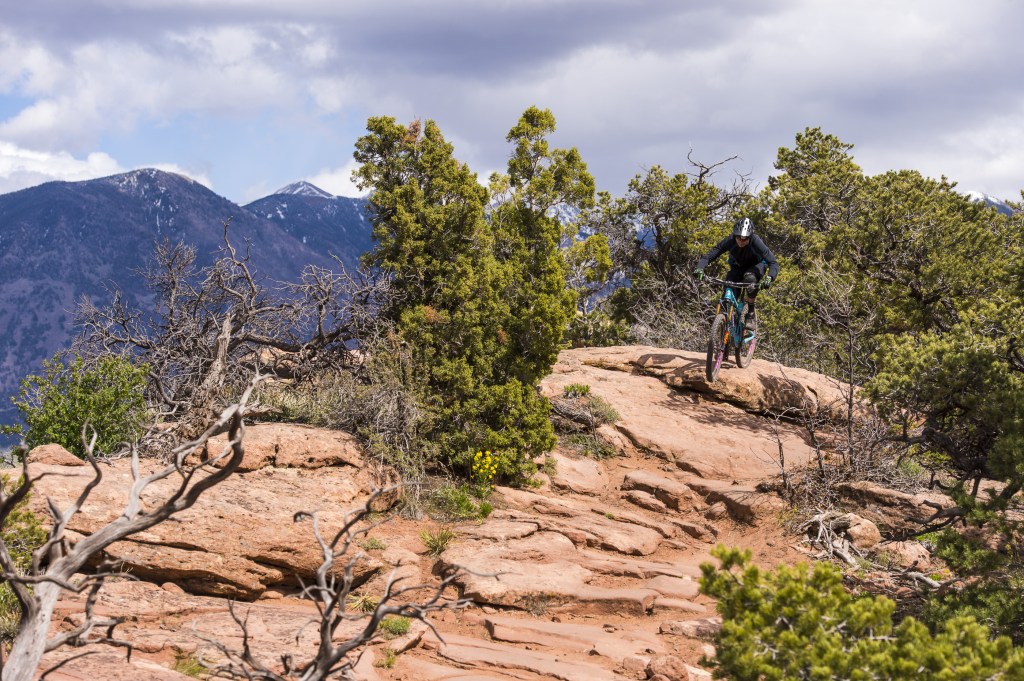
This was a smooth section. Bouncing down some steps on Lower Porcupine Singletrack. Photo – Colin Meagher
The original Fox 36 was light, strong, plush and precise. Confidence inspiring two-bolt clamps gripped the 20mm axle and the RC2 version was highly adjustable. I mainly rode a Van (sometimes a Float) and it worked great without much attention.
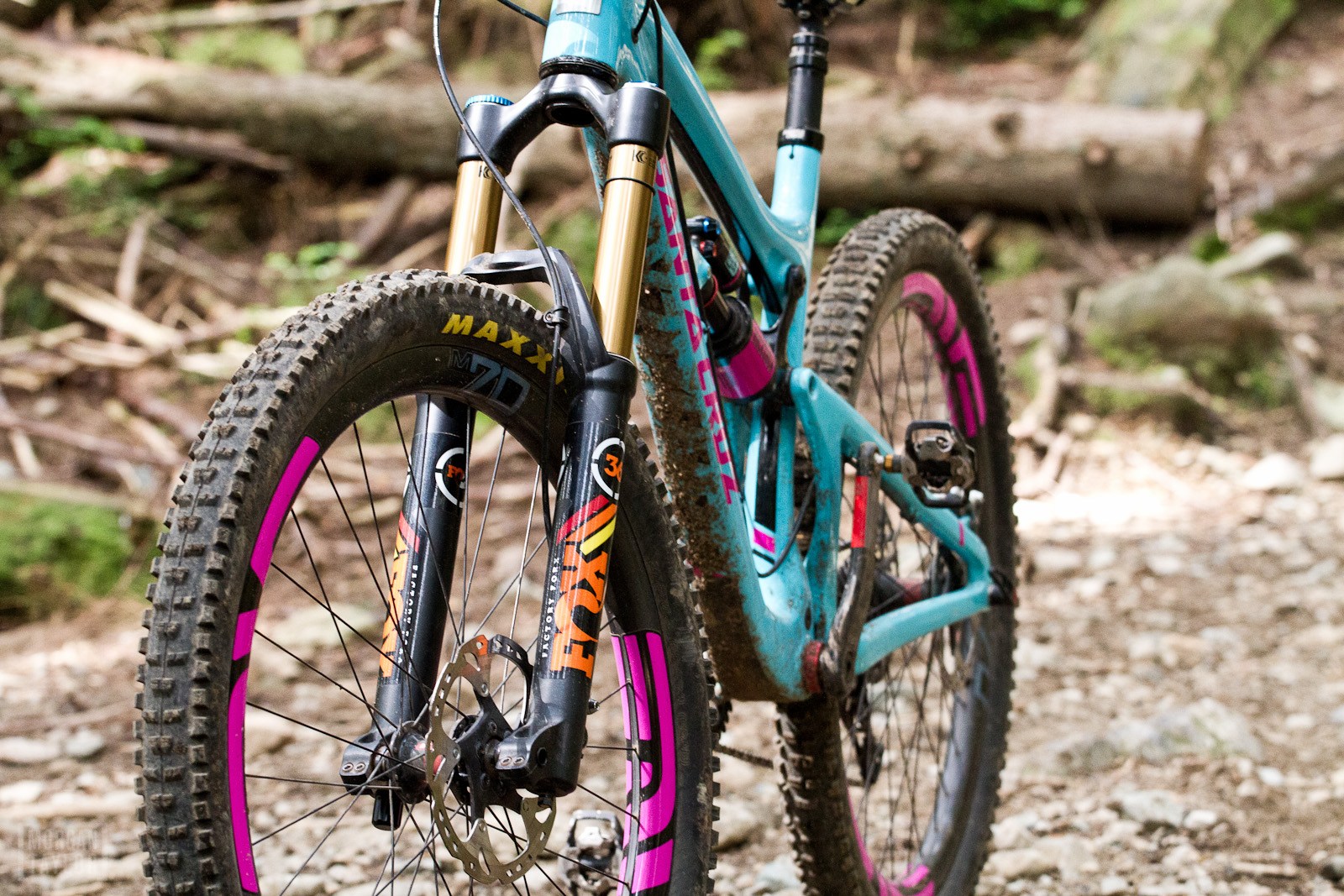
The forks Fox installed for us had the retro decals but you can choose several other colour schemes. Along with dropping weight Fox has reduced the axle to crown length of the new fork. Photo – Morgan Taylor
And then along came the 34. The 20mm axle was gone but the 160 mm version of the fork got spec’ed on burlier bikes because it was much lighter than the 36, had a shorter axle to crown and it was eventually available in every wheel size. The first generation CTD models weren’t well-received by the public and while many found the Descend mode lacked damping support throughout the travel, Trail mode, while initially well damped, lacked support deeper in the stroke and tended to dive. On top of that many of us missed the robust precision of the 36 for long travel applications, particularly in larger wheel sizes.

Lars Sternberg (right) finds a clean line while Mark Jordan suffers in the baby heads. Photo – Colin Meagher
RockShox filled the market gap with the Pike. With its low maintenance Charger Damper, excellent support and adjustability and 4 lb weight, the Pike was an instant hit. Silky small bump compliance and adequate rigidity put it over the top and product managers have slapped it on as many bikes as possible at the top end of the market. The Pike however is only available with a 15mm axle and, if you need a straight steerer you are shit out of luck.
For Fox this meant it was time for a an update of the 36 chassis which Mark Jordan from Fox told us was largely unchanged since 2005. Fox started from scratch, applied new casting techniques already used on the 34 and other models, and rebuilt the venerable 36 for all three wheel sizes using information collected from their RAD (Racing Applications Development) project. The fork was announced in April and many of the details of the new fork can be found here.
A big priority was reducing friction inside and out to produce better response throughout the travel and particularly for low speed impacts. Fox added an oil with a ‘tactifier’ that allows the lubrication to stick to the upper components of the fork rather than succumbing to gravity. When establishing chassis ride quality Fox considers three factors; torsional rigidity, fore and aft rigidity and trans sheer, an evaluation of independent leg movement. This last factor had engineers return to a bolt on thru-axle for the new 36 to ensure it was stiffer than the 34 despite being only slighly heavier. It takes a little longer to remove your front wheel, but for my money the added rigidity is worth it.

Fox returned to the familiar two bolt pinch closure on the 2015 36. Switching between 15mm and 20mm is as simple as pulling out two aluminum sleeves. The sleeves, while easy to remove, stay in place when you want them to. Photo – Colin Meagher
Fox tends to run things racer style even for the media. Each journalist brought a bike along and the idea was to roll a first lap down Moab’s LPS trail with our existing rigs and then take a left back to Sand Flats road where the Fox tech crew would swap out our forks and shocks for lap two.
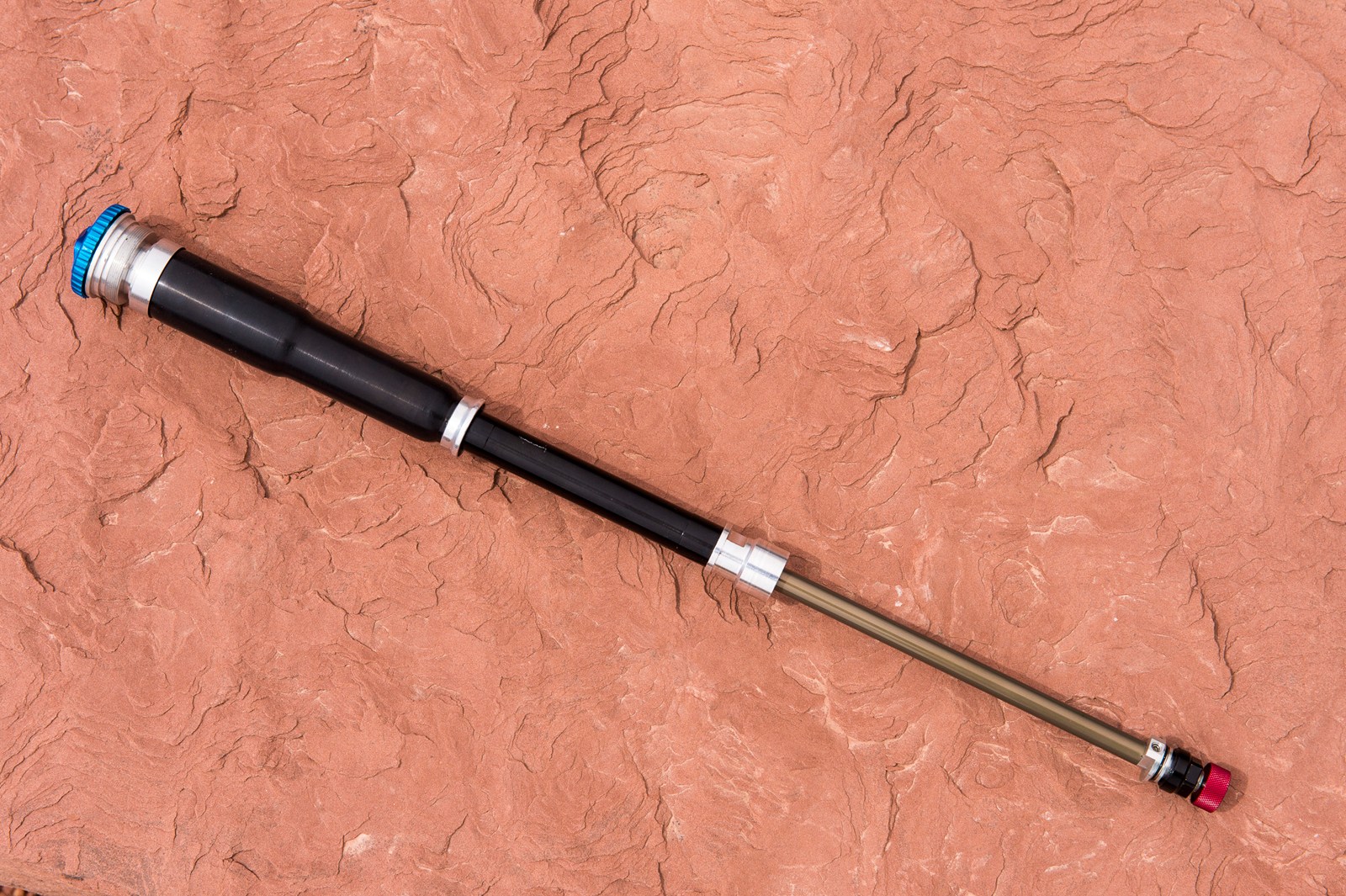
The damper side assembly of the 2015 with the sealed RC2 FIT bladder visible up top. Photo – Colin Meagher
The beginning of LPS is fun, windy singletrack punctuated by interesting rock features. And then it gets fast and rocky. Ariel Lindsley described the lower section as curbs tilted towards you for maximum discomfort. On the first lap I was hanging on, getting re-accustomed to the terrain and figuring out a 2015 Santa Cruz Nomad.

Foxed out and ready for round 2. The inner bore of the lower leg has five different tapers to provide support for bushings. Where no support is required the bore is increased to reduce weight. Fox tells us the 650b FLOAT model shown here weighs in at 4.25 lbs or 1930 grams. 26 and 29 models weigh 4.19 lbs (1900g) and 4.3 lbs (1950g) respectively. Photo – Colin Meagher
After lunch and the shock swap we shuttled back to the top. Our fast group dropped in and immediately the Float X that had been installed on the Nomad failed with a loud crack. All damping was gone and the bike became difficult to handle. Fox doesn’t yet have an off the shelf solution for the new Nomad so this was a shock that was tweaked by hand for the job without going through Fox’s normal quality control procedure. Another rider on a Nomad rode the Float X without incident. Fox is in the process of working on a stock solution for the new Nomad.
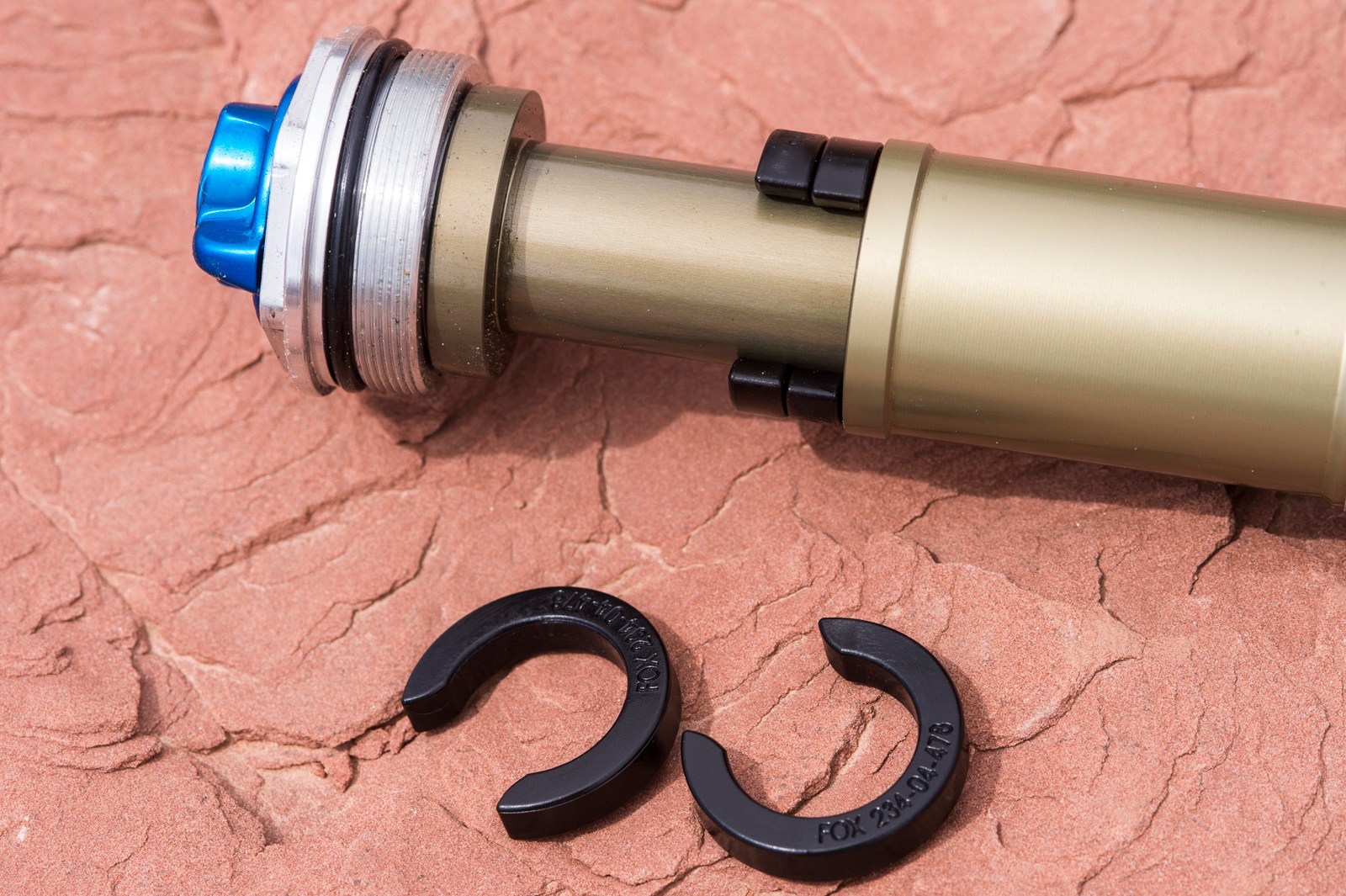
You’ll be able to buy a 36 in either 160 or 180mm travel. Then you can further refine with spacers that will reduce the travel 10mm at a time. The 160 can go down to 110mm and the 180 down to 130mm. Talas models will drop 30mm stock but can be modified to drop 40 by removing a spacer. Photo – Colin Meagher
My back to back comparison with the Pike was a write off so I didn’t get the fork dialled in to my liking for lap three. I found it quite responsive off the top but I felt it stiffened deeper in the travel in response to the punishing high speed, square-edged bumps of Porcupine Rim trail.
I was riding the fork at the recommended pressure but with the damping backed off significantly. The FLOAT RC2 model we rode has 26 and 23 clicks of low and high speed adjustment, respectively, and I had about 7 clicks of each with the rebound toward the fast end of the scale as well.

On the spring side of the fork volume spacers can be added to fine tune the progressiveness of your fork. There are 11cc and 7cc sizes and they can be used together. The FLOAT system now uses a negative chamber rather than a spring. You only need to add air to one chamber though and the valving in the fork equalizes the pressure for you. Photo – Colin Meagher
On day two we rode a recently opened trail called Hymasa up to the midpoint of Captain Ahab. The descent was more rock than dirt and there were lots of fun technical features. I had lowered the pressure of the fork and while I was getting deeper into the travel at certain points it became less distinct. With such a fast crew of riders I didn’t have much time to tinker so I never got the fork to feel the way I hoped.

Our guide Nick Wilson from Hermosa Tours chases his amazing trail dog Charlie down Captain Ahab. Photo – Colin Meagher
After leaving Moab my impressions were that the fork is nice and stiff, both torsionally and fore and aft, but I never fell in love with its damping characteristics. More research was needed. Since I had stolen Pete Roggeman’s test bike, and left the stock fork in Moab, he took over the testing once I got home.
Cam McRae
My first few outings with the new 36 weren’t spectacular. It was robust and progressive, but so much so that I wasn’t able to bottom it out, even in spots where a front fork should always retract like a poked slug. Sure, it rode high in its travel and in that sense matched what was happening in the back of the Nomad, but the fact that I wasn’t able to use all of its travel, and what I did use wasn’t feeling groovy meant we clearly hadn’t unlocked the fork’s setup secrets just yet. Traction wasn’t great, either – so we didn’t have it dialed for middle and deep stroke hits or for suppleness at the beginning through middle of the stroke.
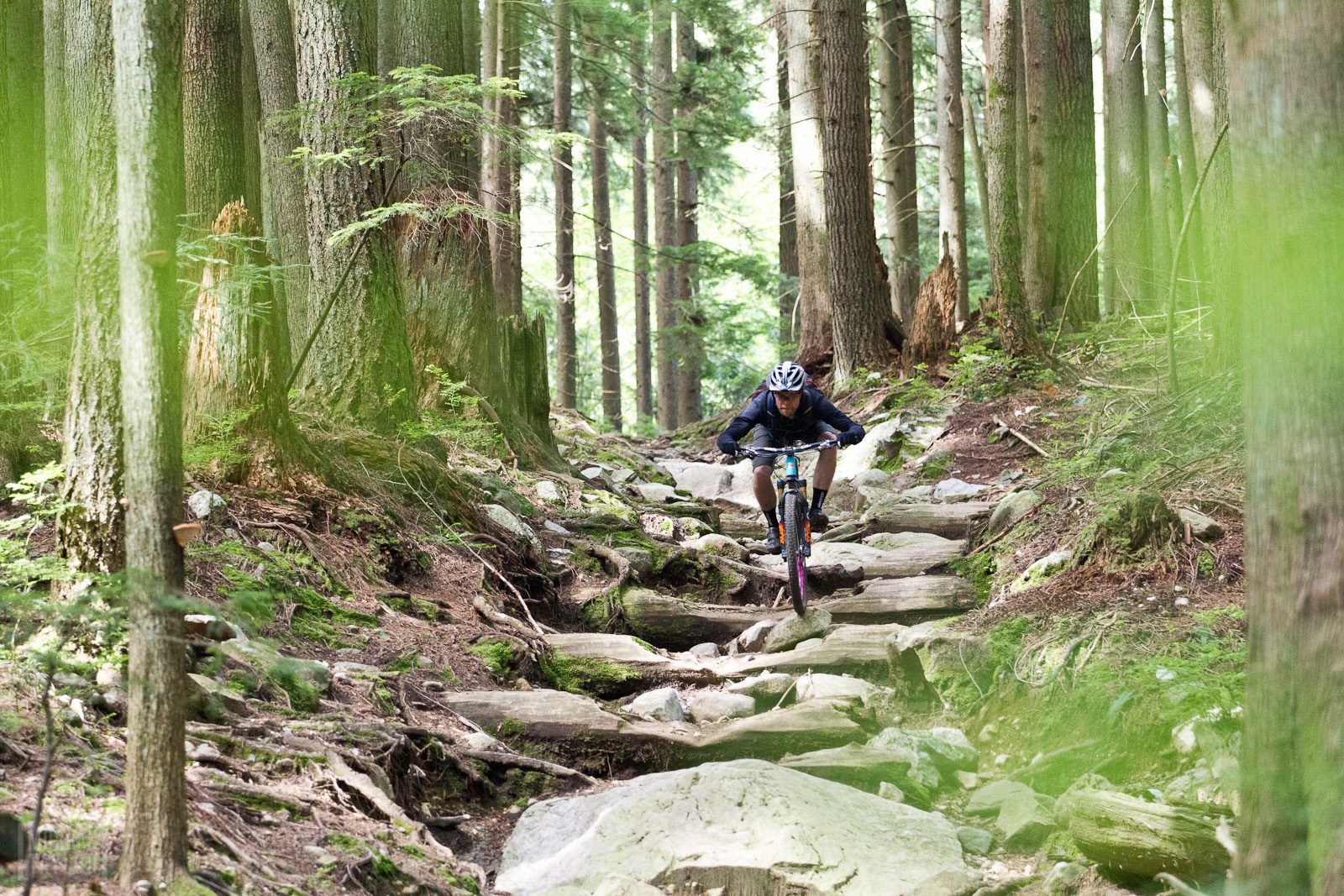
Back on the Shore. Incline Trail on Mt. Seymour was a suitably punishing test track for the set up of the 36 for Pete. Photo – Morgan Taylor
However, beyond adding a bit of air on top of what Cam was running (I outweigh him by 15-20 lbs.) most tweaking had been restricted to backing off the compression (high and low speed) from the middle of the range down towards the open side. In short, I was using less than half of the available compression damping to try to overcome the damper’s spring setting (which was between 68-70 lbs for my 185 lb body weight).

High and low speed compression are adjusted independently at the top of the right hand fork leg. Photo – Morgan Taylor
A conversation with Morgan Taylor, who has had a lot of time aboard the RC2-equipped Fox 40 revealed a slightly different take. He channeled Arthur Gaillot’s expertise and explained how a fully closed compression damper in this case can be thought of as a closed door. Back it off one click, the door opens a crack, which is a significant change from fully closed. Remove one more click, and you’ve just doubled the amount of ‘light’ getting through the door (or for our purposes, the amount of oil allowed through the circuit).
Each successive click opens the circuit the same amount, but with diminishing returns in terms of the difference you will perceive on the bike. In other words, from fully closed, the differences are larger, whereas from the open side of the range, the differences are more minute. Since we’d been operating at the open side of the range, it’s no surprise we weren’t getting the amount of change we hoped for from a handful of clicks.
We removed air in 1-2 lb increments and already I knew we were on the right track. When we got down to 63 lbs., where it now sits, we had to add a bit of rebound damping and also got both high and low speed compression closer to the closed side. Final setup notes for me in North Shore conditions (I would run it with a bit more air in the spring for higher speed trails):
Rider weight: 185 lbs.
RC2 spring preload: 63 lbs.
Low speed compression: 9 from closed (of a total of 26 clicks)
High speed compression: 7 from closed (of a total of 23 clicks)
And with that, the 36 RC2 has come alive. It still rides high in its travel but is now happy to get down to work, moving predictably through its travel in the mid stroke, and only reaching deep or bottoming when really called upon. Higher speed rough sections are gobbled up like a six year old’s Easter basket and I haven’t yet had a big show-stopper of a hit that elicited a “holy shit this is it” situation where you blow through it all and are then forced into a heavy push-up to avoid putting your chest into your stem.
Cornering traction has improved, especially on the dampened dust on granite we get here in the Spring, so performance is matching the better perceived feel as well. The all-new chassis is stiff, of course (did you expect any less?) and can I take this opportunity to ask that we don’t kill the 20mm axle just yet for AM use?
It’s early days but with setup now feeling pretty close to dialed and a better understanding of how to work with this platform, it looks like the new RC2-equipped Fox 36 is poised to continue the tradition of performance set by earlier models, and, yes, challenge the Pike for the attention of product managers and consumers looking to bolt some performance boing on the front of their AM bike.
Pete Roggeman
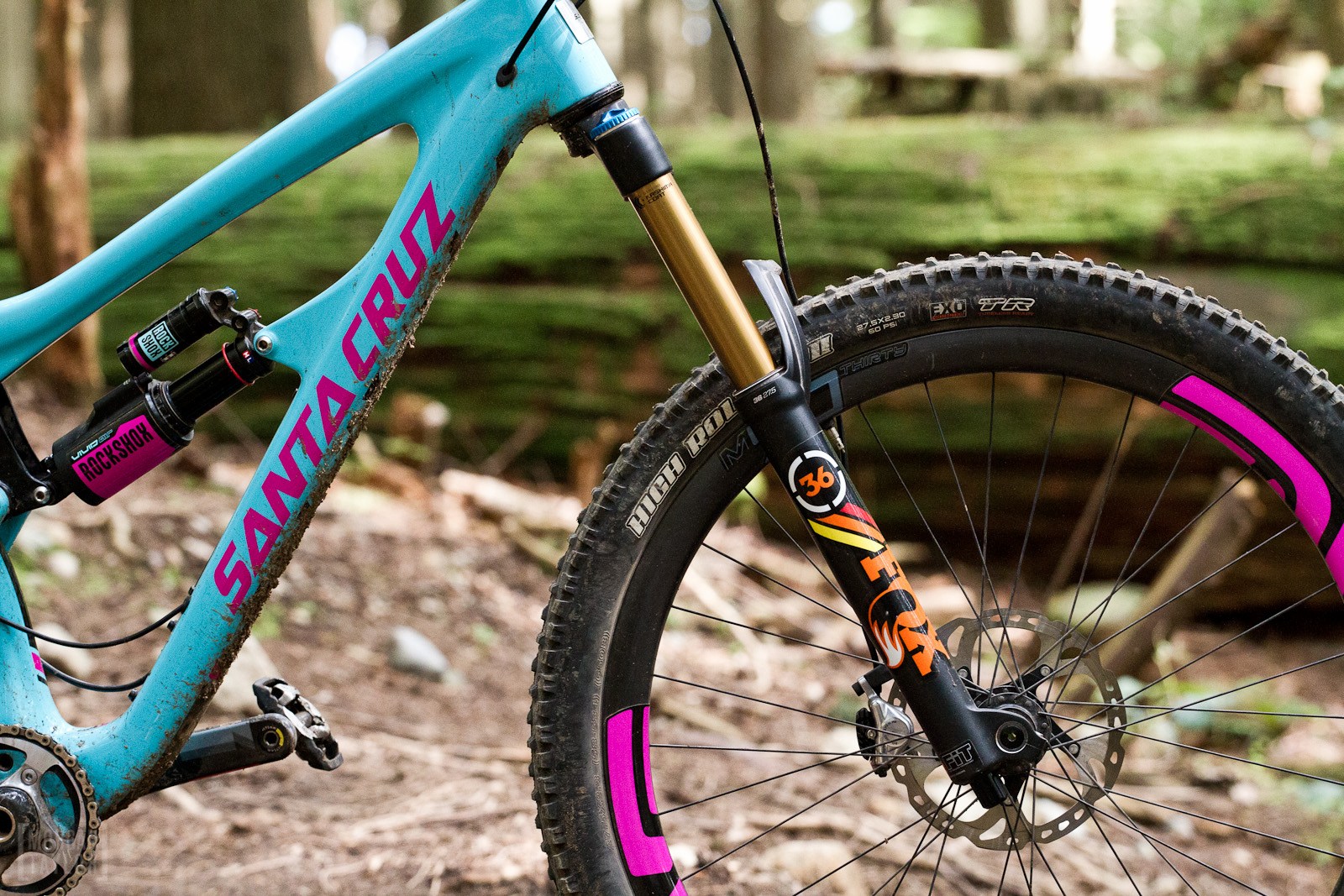
Both the Talas and Float models will come in Factory trim, meaning Kashima is the only option for now. Photo ~ Morgan Taylor
Fox expects to start delivery of the 2015 36 in July and you’ll be able to get it with a straight 1 1/8″ steerer if you desire. Pricing for all three wheel sizes starts at $1050 US for a FLOAT model and a Talas will set you back $1150.
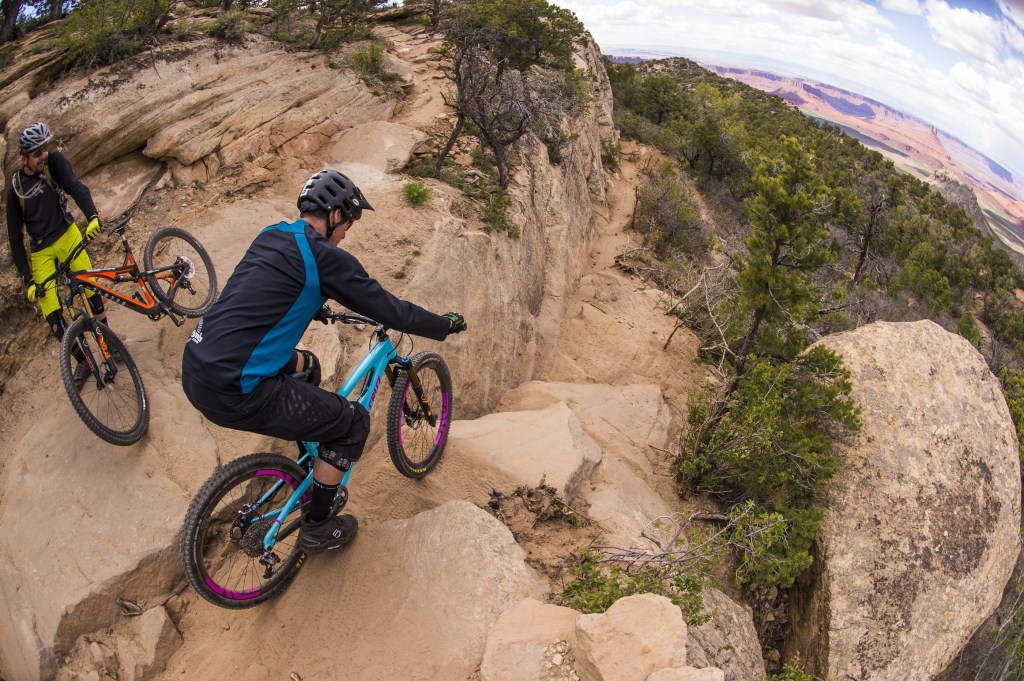









Comments
Patrick Mulligan
9 years, 8 months ago
Cam,
You covered your set up with Air Spring, and HSC / LSC, but not your rebound or if you left or removed the single spacer that comes in the fork from the factory. What Rebound settings did you use? Did you find with the rebound too fast that it was fighting you in mid stroke? If you removed the space (or not) how did that effect ride quality?
Reply
megrim
9 years, 10 months ago
Pete and Cam,
Good initial review so far; I really like the trouble shooting to dial in the settings. Maybe I missed it, but which travel option were you guys riding? I know it's early days, but can you compare it to the Pike (both on the Nomad)? I just picked up a new Nomad as well and built it up with a 26″ 180 36 Float. Feels pretty good, but much different than my Pike on my other bike.
Mike
p.s. Do you guys prefer the Monarch or the Vivid on the Nomad?
Reply
Pete Roggeman
9 years, 10 months ago
Mike,
Thanks. We have a 160mm Float. I'm hesitant to start comparing just yet, and here in a comments section where I'd like to keep it short, but will do in the next article about the Nomad. Interesting fork choice for your Nomad, how is the geo working out?
Reply
megrim
9 years, 10 months ago
Pete,
So far the geometry feels spot on. These are the axle to crown heights I got from the internet. 26″ Fox 36 180 mm = 565 mm; 650b Pike 160 mm = 552 mm. So I figure it's just a hair slacker than stock. It feels like a freeride bike from the days gone by and it's a whole lotta fun!!
Mike
Reply
Pete Roggeman
9 years, 10 months ago
Well I've been loving the 65º HA on the Nomad as is (but that reminds me I should compare axle to crown of Pike vs the Fox 36 160mm) so even slacker would hopefully just be even more of a good thing. Where did you buy yours, Mike?
Reply
megrim
9 years, 10 months ago
Hey Pete, I picked mine up at Steed as a frame only. Then I built it up with parts I had at home. I built it up with pretty standard parts (no carbon except the frame) and a pretty burly build. It ended up at 31.5 pounds and I was shocked at how light it was. At first I was a little concerned that it would be too close to my 150 mm Carbine, but my concerns were set at ease when I threw my leg over the Nomad for the first time. I like that you can pedal to the top, then just blast downhill. I'm just running the Monarch right now, but I'm interested to try/hear about the vivd or CCDB air on it.
Mike
Reply
boomforeal
9 years, 10 months ago
i got a chance to pick arthur's brain last year on a rainy ride up fromme. one of the jewels he dropped is that each company's suspension requires a different approach based on the character and quality of the pieces they use: spring, dampers, etc. he mentioned that with a fox air shock, you're better off using a softer spring rate and more damping, whereas with marzocchi, it's pretty much the opposite story…
odd that despite going through the trouble of flying everyone out to moab to ride, fox wouldn't have gone over basic setup technique and tips to help you get things dialed in. on the flip side, it's probably even more helpful for readers to have this related as experience, rather than company tech talk, as the rc2 takes more time and effort than many other, simpler dampers, to get set up properly… but the end result it worth it in my experience
Reply
Pete Roggeman
9 years, 10 months ago
Oh, they did, it's just that, as Cam mentioned, it wasn't possible to get it fully dialed in down there, and then once it got up here, we have found set up (so far) to work a little differently for us than what Fox suggested. There is more fiddling to be done, though, and I'm going to try a bit more air and less compression as a comparison.
I will say that last night on Executioner, the 36 ate some ridiculous bumps and holes during a few badly chosen lines and saved my ass. A few times I thought I was done for, but came out smiling. The Nomad's 65º HA helped, too.
Reply
Andy
8 years, 1 month ago
Hey pete. I used your settings for the 36 on my bike and you're right it's awesome. Just wondered if you still remember your settings for the monarch on the Nomad?
Reply
Cam McRae
9 years, 10 months ago
Pete nailed it. The snafu on the second run put me a little behind. That, a bike I wasn't accustomed to and the completely different riding conditions from home. The Fox guys did a good job.
Reply
Please log in to leave a comment.